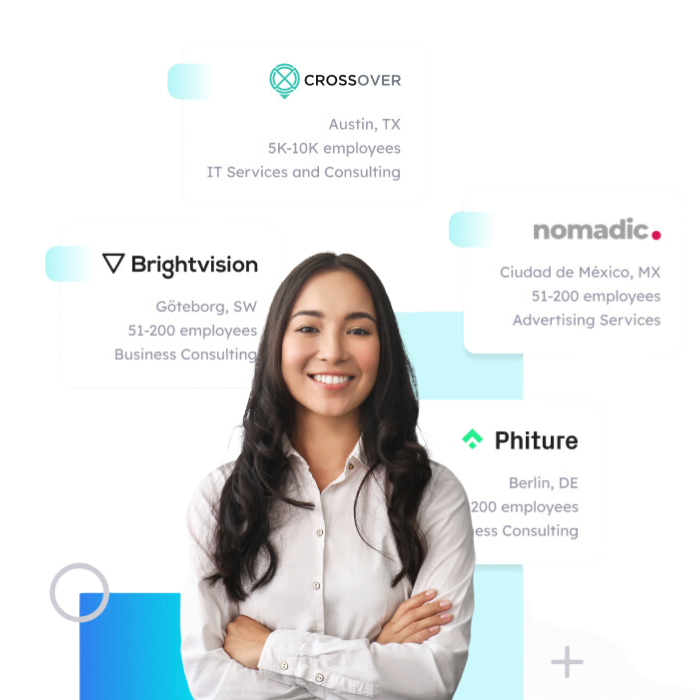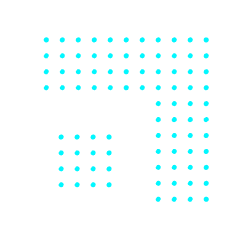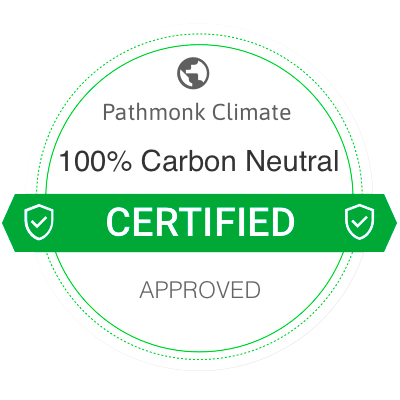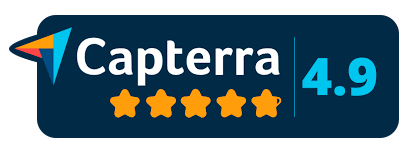Everyone’s using AI to outsmart the competition and increase conversions. If you’re not, you’re the one being outsmarted.
Your competitors aren’t just improving their ad design or copywriting. They’re getting better at understanding you. They know your pricing. They know your positioning. They know your weak spots. And while you’re still manually checking websites or running a few searches, they’re using AI to dissect your strategy in minutes and convert your audience before you can react.
This article shows you how to flip the script.
You’ll get a step-by-step system to use AI for in-depth competitive research and ad creation. No guesswork, no surface-level tactics. You’ll learn how to extract your competitors’ value props, build feature and pricing comparison tables in minutes, identify real strategic gaps, and turn that intelligence into ad hooks that directly challenge their positioning. Everything is fast, actionable, and designed to win you more leads.
Let’s break it down.
Table of Contents
The competitive intelligence problem in 2025
Manual competitor research no longer cuts it.
In today’s environment, strategies shift weekly. Ads are updated in real time. Pricing pages change without notice. If you’re still relying on static spreadsheets, screenshots, and gut instinct, you’re flying blind while your competitors are building intelligence systems.
We have identified three main failures with manual research:
- Surface-level data: Most marketers track only what’s visible: ad copy, product pages, and pricing tiers. But without context on why those decisions were made or how users respond to them, the insights are shallow and non-actionable.
- No speed, no scale: A manual teardown of five competitors can take days. By the time you’re done, your competitors have already iterated.
- No synthesis or strategy: Even with raw data collected, most teams don’t have the time or bandwidth to turn that into usable insights—feature maps, pricing breakdowns, messaging gaps, or ad hooks.
Meanwhile, your competitors are using AI to automate every one of those steps.
They’re running landing pages through LLMs to extract positioning statements. They’re scraping reviews and prompting ChatGPT to summarize pros and cons. They’re clustering ad variants to identify patterns. And they’re shipping faster, more targeted campaigns as a result.
If you’re not doing the same, you’re not just behind. You’re invisible. Sorry.
How AI is changing the game of competitive intelligence
AI doesn’t just speed things up. It changes what’s possible.
You’re no longer limited to what you can manually review or screenshot. With the right setup, AI can break down every competitor move—at scale—and hand you actual strategic insight, not just noise.
Start with positioning. Feed a few landing pages into GPT or Claude, and you’ll get a distilled view of their value props, tone, and emotional triggers. Not generic summaries: actual insight into how they sell, what they emphasize, and where they repeat themselves.
Then pricing. You can stop guessing at tiers or squinting at hidden fees. AI can build a complete pricing table across competitors, flag mismatches between feature sets and cost, and highlight positioning plays—like when a competitor overcharges for something you offer free.
Same with features. Instead of creating a comparison doc from scratch, you prompt AI to turn product pages into structured matrices. You’ll see where you’re ahead, where you’re missing coverage, and where your competitors are overselling weak spots.
But the real gold is in user sentiment. Scrape reviews from G2, Reddit, Capterra—then prompt AI to extract pain points, recurring complaints, even how buyers talk about the problem. You’ll surface patterns no manual scroll-through could catch.
And finally, ads. Pull together their latest creative and use AI to cluster by message angle or intent. You’ll quickly see what’s overplayed, what’s working, and where they’re leaving gaps you can step into.
This is what smart teams are already doing. Not just tracking competitors, but dissecting them.
Free competitor
analysis template
Understand your competitors, spot opportunities, and stay ahead in your market.

How to run a full competitor teardown using AI
You don’t need a 10-person research team. You need the right tools, the right prompts, and two focused hours.
Here’s the exact workflow that gets you real results.
1. Start with Manus.im
Install the Manus.im Chrome extension and start visiting competitor websites. It automatically saves and organizes each page—pricing, features, landing pages, blog posts—so you don’t have to screenshot or copy anything manually. Think of it as your AI-friendly data collection layer.
2. Drop everything into GPT or Claude
Now that you’ve captured the raw materials, open your LLM of choice. Paste in the full copy of a landing page or pricing page. Here’s a prompt you’ll want to reuse:
You’re a senior product marketer. Based on the copy below, tell me:
- What’s the core value proposition?
- How do they position against competitors?
- What emotions are they triggering?
- What features are emphasized or hidden?
- Any weak spots or inconsistencies?
This gives you a structured breakdown—fast. Run it across three or four competitors and you’ll start to see patterns immediately.
3. Generate your feature and pricing tables
Once you’ve analyzed the positioning, it’s time to map the actual product. Ask GPT to create a comparison table with your product on one column and competitors on the others. Include key features, integrations, pricing tiers, and any perks they’re promoting.
This isn’t for show, it becomes the base for your differentiation. Where are they charging more for less? What features do they mention but don’t explain? What can you own that nobody’s saying out loud?
4. Add user reviews to the mix
If you want to understand how people actually feel about your competitors, scrape some reviews from G2, Reddit, or Capterra. Feed them into GPT with a prompt like:
Summarize the top complaints, most loved features, and common frustrations in this review set. Highlight anything that keeps showing up.
You’ll end up with insight you can’t fake. Real pain points, in the users’ own words. Perfect for writing ads that feel like you’re reading their mind.
This teardown process doesn’t just give you ideas. It gives you language, angles, and proof. And it’s miles ahead of any “competitor overview” slide deck you’ve built before.
How to spot your competitive advantages and blind spots
Once you’ve got the teardown, the next step is simple: figure out where you win, where you lose, and where no one’s looking.
Start by asking the AI to compare you directly. Feed in your own landing page or product copy alongside theirs and ask:
Based on both sources, what do we offer that they don’t?
Where are they stronger?
What’s missing from both that we could own?
This forces contrast. It shows you what your messaging is actually communicating (vs. what you think it is), and where your strengths are getting lost.
If your product is more flexible, faster to implement, or more transparent on pricing—but that’s not obvious in the comparison—you’ve got a messaging problem. Fix that before you touch a single ad.
Now flip it. Ask the AI:
What’s the weakest part of their strategy?
What are they over-promising?
What’s going to make their users churn?
This is where your opportunities come from. Maybe a competitor is hiding their pricing or charging extra for basic features. Maybe they promise “AI-powered” but don’t show any proof. Maybe their onboarding is clunky and users are venting about it on G2.
Take note of these. They’re not just weaknesses, they’re ad angles waiting to happen.
The goal isn’t to make a prettier comparison chart. It’s to expose gaps you can step into and double down on what you do best. If you skip this step, you’ll just end up mimicking your competitors instead of outmaneuvering them.
How to turn insights into ads that outperform your competitors
This is where most teams drop the ball. They do the research, build the tables, maybe update a slide deck—and then go right back to writing the same generic ads.
Don’t do that.
You’ve just uncovered the weak points in your competitors’ positioning. Use them.
Start by writing hooks that hit those gaps directly. Not in a petty way—this isn’t about naming names. It’s about owning the message they can’t.
If they’re vague on pricing, your hook is: “No hidden fees. No setup costs. Pricing that actually makes sense.”
If they oversell automation but deliver manual workflows, try: “AI that doesn’t just pretend. Automate your pipeline without duct tape.”
These aren’t guesses. They’re built from patterns your competitors refuse to talk about.
You can even prompt GPT to help you scale this fast. Drop in your teardown and ask:
Give me 10 ad hooks that exploit the gaps in Competitor X’s messaging without mentioning them directly. Prioritize clarity and conversion, not fluff.
Then test them. Short-form, long-form, different tones. Run them through Meta, Google, or wherever you’re active. Just don’t rely on CTR alone—track what brings in leads that actually convert.
Bonus: pair each ad with a matching Pathmonk experience. If someone clicks on a hook about speed, show a testimonial from a client who launched in 48 hours. If the ad calls out poor support, show your live chat in action or a real stat about your response times.
You’re not just improving your ads. You’re actively undermining your competitors’ narrative—while building a stronger one of your own.
Increase conversions from your PPC campaigns
Achieve high-converting campaigns with personalized website experiences

Real examples of AI-generated insights turned into campaigns
Let’s make this real. Here’s what it looks like when you actually apply the process end to end.
Example 1: Competitor hides pricing behind demos
After feeding their pricing page and reviews into GPT, the AI flagged the #1 frustration: unclear costs and long sales cycles.
The campaign response?
Ad hook: “Still chasing pricing? Here it is—simple, fast, and public.”
Landing experience: An interactive calculator, showing real cost estimates based on user input. Personalized upsell path for high-ticket leads.
Result: Lower bounce, more qualified leads, fewer sales objections.
Example 2: Competitor overpromises on AI, underdelivers
Their landing page was filled with buzzwords. No specifics, no workflows, no real examples. GPT picked up on it instantly.
Ad hook: “Real AI, not a badge on your footer.”
Landing experience: Live demo video + client quote walking through a real automation use case. Micro-experience triggered for visitors coming from AI-related ads.
Result: Higher engagement and a clear lift in demo requests from technical buyers.
Example 3: Feature parity, but better onboarding
The feature table showed near-identical coverage—but GPT flagged a recurring complaint in reviews: confusing setup and clunky integrations.
Ad hook: “Everything they offer, minus the onboarding headache.”
Landing experience: Pathmonk experience featuring setup time comparison, a quick-start checklist, and proof of live support.
This isn’t about clever copy. It’s about precision. Every hook is backed by data. Every claim ties back to real pain points. And every ad connects seamlessly to an experience that converts.
Once you run this process once, you’ll never go back to guessing. It’s repeatable, fast, and gets sharper the more you use it.
Get more conversions on your website with AI-powered personalization
Doing all the research and building high-performing ads is only half the battle. If visitors land on your site and get the same one-size-fits-all experience as everyone else, you’re wasting the click—and the insight that got you there.
Well, say hello to Pathmonk 👋
Instead of sending all traffic to the same generic page, Pathmonk uses behavioral intent signals to personalize the experience in real time. Visitors see exactly what they need to convert—nothing more, nothing less.
Let’s say your ad highlights how fast your tool is to set up. With Pathmonk, users who click that ad may see a testimonial from a customer who went live in two days. A simple checklist to show how fast onboarding really is. A CTA tailored to speed: “Launch your first campaign today.”
Or maybe your ad calls out a competitor’s hidden fees. With Pathmonk, you can show your pricing breakdown, upfront. No hunting. No click friction. Just instant clarity.
This isn’t about personalizing the headline. It’s about reshaping the experience to match the user’s intent—based on what brought them there and what they do once they arrive.
Pathmonk works behind the scenes to detect:
- Where users came from (which ad, which campaign, which search intent)
- What they’re doing on-site (scroll depth, clicks, hesitation signals)
- What part of the journey they’re in (discovery, evaluation, decision)
Then it adapts the journey accordingly.
This lets you squeeze more from the traffic you’re already paying for—and it works across channels, from paid ads to organic search to email campaigns.
So if you’re serious about using AI to win, don’t stop at the ad level. Bring that intelligence into the actual experience. That’s what turns clicks into leads—and leads into real revenue.
If your competitors are using AI to understand you, this is how you stay one step ahead.
Increase +180%
leads
demos
sales
bookings
from your website with AI
Get more conversions from your existing website traffic delivering personalized experiences.

FAQs about how to use AI for competitive advantage
1. What’s the best way to use AI for competitor analysis in 2025?
The most effective way to use AI for competitor analysis today isn’t just about speed—it’s about structure and depth. Instead of scanning landing pages and ad libraries manually, top-performing marketers are using AI to extract positioning strategies, pricing models, emotional messaging patterns, and gaps in product coverage. The key is to combine three elements: automated data capture (tools like Manus.im), prompt engineering for structured outputs (using ChatGPT or Claude), and strategic interpretation to turn those insights into decisions.
Start by collecting your competitors’ key assets—landing pages, pricing, feature descriptions, and user reviews. Use AI to summarize each one with prompts that extract value propositions, target personas, tone of voice, and blind spots. Then compare those outputs side by side with your own. AI helps remove bias from the equation, giving you a clear view of how your positioning holds up and where you can differentiate more clearly. The result isn’t just a report—it’s a playbook for better messaging, product decisions, and ad campaigns.
2. How can I use AI to reverse-engineer my competitors’ ad strategy?
To reverse-engineer a competitor’s ad strategy using AI, start by collecting a full set of their active and historical ads. Use Meta Ad Library, Google Ads Transparency Center, or tools like Adbeat to gather copy, formats, and visuals. Then feed the content into an AI model like ChatGPT or Claude, and prompt it to analyze for patterns: emotional triggers, common value propositions, funnel stage targeting, audience assumptions, and creative angles. With the right prompts, you’ll get a structured breakdown of not just what they’re saying, but why and to whom.
Once you’ve done this across multiple campaigns, you can ask AI to cluster the messaging by theme. For example: “Group these ads by emotional angle (e.g. urgency, trust, fear of missing out), and indicate whether they’re top, mid, or bottom of funnel.” This shows you how your competitors are building their customer journey—and where they may be overinvesting or leaving gaps. From there, you can craft ads that go after the same audience with a sharper message or exploit blind spots they’ve missed entirely.
3. What AI tools help create competitor pricing and feature comparison tables?
The fastest and most scalable way to build competitor pricing and feature comparison tables is by combining a data capture tool like Manus.im with a large language model such as ChatGPT (with table support) or Claude. First, collect the relevant competitor pages—pricing breakdowns, feature grids, FAQs, onboarding flows. With Manus.im, you can save all this content without copying it manually. Then feed the raw content into GPT with a prompt like: “Extract all pricing tiers, features, and limitations from the following competitors. Create a comparison table that includes our product, and flag key differences.”
AI excels at organizing semi-structured content into clean, readable tables. You can ask it to highlight who leads on certain features, where your pricing is more competitive, or which offers are buried behind paywalls. This turns a tedious manual process into a 10-minute task. The result is a table that isn’t just useful internally—it becomes the foundation for sales battlecards, positioning updates, or even direct-response ads calling out specific value gaps. It’s one of the clearest use cases where AI gives an immediate competitive advantage.
4. Can AI help identify weak points in a competitor’s positioning?
Yes—and it’s not just about spotting missing features or fluff-filled claims. AI can uncover strategic blind spots in how your competitors are framing their value, which users they’re prioritizing, and which use cases they’re ignoring. One underused approach is to compare their positioning language to customer sentiment. Feed AI both their landing page and a batch of G2 or Reddit reviews. Then prompt:
“What themes in the customer feedback contradict or challenge this brand’s core messaging?”
This helps you spot where they’re overpromising and underdelivering—valuable not just for ad angles but for shaping your own brand story. You can also layer in prompts that compare their messaging across different channels (homepage vs. email vs. paid ads) to highlight inconsistencies. Brands that sound confident on the homepage but weak in the sales email sequence usually don’t have a clear narrative—and that’s your opening.
5. How do I write better ad hooks using AI competitor research?
The key is not just reacting to competitor messaging—it’s flipping it. AI helps you craft hooks that don’t imitate but challenge what competitors are saying, especially when you detect recurring themes or lazy patterns.
Here’s a method: ask AI to generate first a summary of overused promises from your top 3 competitors’ ads (e.g. “fastest setup,” “all-in-one,” “trusted by X companies”). Then prompt it for counter-positioned hooks that differentiate your product without sounding derivative.
For example:
- If everyone claims “all-in-one,” your hook could be “One tool. One purpose. One result: more conversions.”
- If they say “AI-powered,” you can go with “Real intelligence. Not just a buzzword.”
This creates friction in the market. Your hooks feel sharper because they break the pattern your audience has already tuned out. You’re not just writing “better” ads—you’re shifting the narrative.
6. What prompts should I use to analyze a competitor’s landing page?
Most prompts people use are too descriptive. To get deeper, you want prompts that ask the AI to interrogate the landing page—challenge it, not just describe it. For example:
“From this landing page, what assumptions is the company making about the buyer’s priorities? Are there any mismatches with standard buyer expectations in this category?”
Or:
“Does this copy show evidence of understanding buyer objections? If not, what’s missing?”
Or even:
“Rewrite this landing page for a technical buyer who cares more about performance than design. What would you change?”
These types of prompts force the AI to unpack the logic behind the messaging. You get insight into who the page was really built for, what it might be failing to address, and how you could reframe your own page to outperform it—without copying a single line.
7. How do I decide which competitors to analyze with AI?
Start by segmenting your competitive landscape into three buckets: direct, indirect, and aspirational competitors. Direct competitors are those offering similar products to the same audience. Indirect competitors may solve the same problem differently or serve a slightly different segment. Aspirational competitors are the ones with stronger brand presence, bigger budgets, or more advanced go-to-market strategies—they’re not always your size, but they shape buyer expectations.
Once you’ve mapped this out, pick 2–3 from each bucket to analyze. Use AI to compare not just features, but the positioning layer: how they talk about outcomes, who they’re speaking to, and what proof they use. This gives you a strategic view—not just how to win against the obvious players, but how to stay relevant as market expectations shift. Don’t get stuck benchmarking against brands that are too similar. Often, the insight lives in how aspirational competitors create perception gaps you can exploit.
8. Can AI help me monitor changes in competitor strategy over time?
Yes—and it’s one of the most underused advantages of AI in marketing. Instead of one-off analysis, you can use AI to run ongoing comparative snapshots of key competitors. Every month (or quarter), re-run their landing pages, pricing pages, ad creatives, and even recent blog posts through the same prompts you used before. Then ask:
“What’s changed in tone, structure, or messaging since the last version?”
“What new product themes or objections are being addressed?”
“Does this indicate a shift in audience targeting or GTM strategy?”
With the right prompt tracking, AI becomes your competitive change detection engine. You can set up this workflow using tools like Diffbot or a content monitor paired with GPT via Zapier or Make. It gives you early signals on product shifts, churn problems, or strategic repositioning—so you can respond before they start pulling leads away from you.





